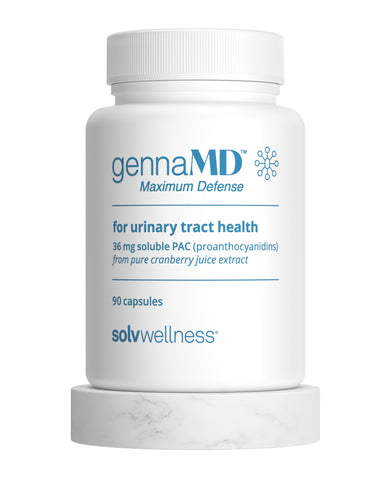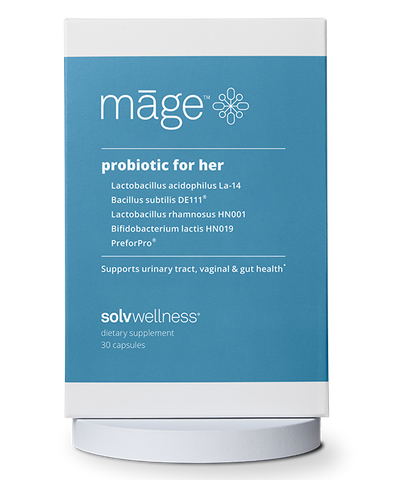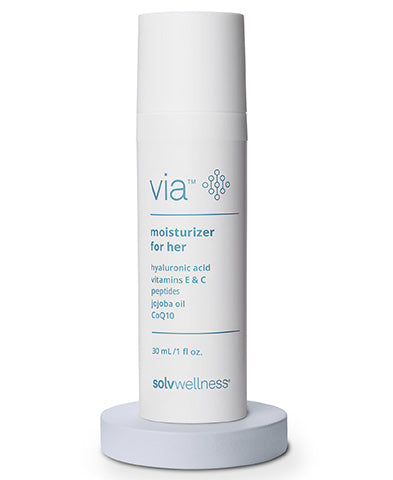Too many women deal with pelvic issues at midlife and beyond, many of us suffering in silence—because we aren’t aware of safe and effective solutions. Or maybe it's because we aren’t comfortable bringing up the topic with our healthcare providers—and, let’s face it, they don’t always ask us the right questions to get us to open up. It can feel more than a little awkward, so we asked Female Sexual Health expert Brooke Faught, DNP, to share a list of the top ways she advises women (and healthcare providers!) about sex and women’s pelvic health at midlife and beyond.
"So many patients deal with vulvovaginal disorders, but they are not always discussed, either because patients don't ask about it or we don't bring it up."
 Brooke Faught, DNP, WHNP-BC, NCMP, FAANP, IF.
Brooke M. Faught is a board-certified women’s health nurse practitioner with extensive experience in female sexual and pelvic floor medicine, urology, and vulvoscopy. She is also the Director of the Women’s Institute for Sexual Health (WISH) and is a Fellow of and Secretary on the Executive Board of Directors of ISSWSH. |
Here are some things Dr. Faught would like you to keep in mind when it comes to sex and pelvic health if you’re on the menopause spectrum:
1. Does "not tonight" become every night? You aren't alone.
First, it's important to determine what's causing lack of interest in sex: low libido or hypoactive sexual desire disorder (HSDD). While they're very similar, the difference is mainly an emotional one. With low libido, women aren't bothered by it and therefore don't necessarily need treatment. But with HSDD, that lack of interest is bothersome or puts a strain on relationships, and therefore warrants treatment; HSDD is experienced by 10% of US women.1 Dr. Faught breaks down sexual response enhancers and inhibitors, while also sharing options to treat HSDD. She also shares the ISSWSH process of care for the management of HSDD , a guide for medical professionals not directly involved in sex medicine, to help navigate patients' sexual desire concerns.
2. Vulvovaginal care—what works, what doesn't, and what to avoid.
Dr. Faught says the vagina is a unique organ: on the one hand, it's like a self-cleaning oven, and on the other, it's a very delicate environment that can be easily disrupted with harsh chemicals. That's why she recommends avoiding harsh soaps and douches, and hard scrubbing. Instead, she recommends mild chlorine-free and bleach-free hygiene products. She also recommends adding a quality vaginal moisturizer if experiencing dryness that's causing symptoms like itching, burning, or pain during sex or urination, especially for women in menopause. Many factors can cause vaginal dryness, like certain medicines, but menopause is the most common cause because estrogen decline makes skin drier skin everywhere, including the vagina. When this happens, the risk for infections like BV (bacterial vaginosis) and UTIs can increase significantly. Moisturizers like Via are designed to be absorbed by the skin to replenish the body's natural supply of moisture.
3. The real impact of oral contraceptives on libido, and why.
Dr. Faught shares potential sexual function as a factor to consider when starting a patient on hormonal birth control. Studies have shown that hormonal birth control can decrease libido and cause vaginal dryness even after the patient stops taking it.2 She discusses oral contraceptive alternatives, like IUDs and nonhormonal options.
4. How to minimize the risk (and fear) of UTIs due to sex. While sex is a known trigger for UTIs, there are ways to reduce the risk.
Like all healthcare providers, Dr. Faught recommends voiding (urinating) after sex to eliminate any urine that might be harboring bacteria. She also advises proper water intake, maintaining or restoring vaginal acidity, treating vulvovaginal atrophy / vulvar skin disorders, and a cranberry supplement. When choosing a cranberry supplement, Dr. Faught emphasizes the importance of 36 mg bioavailable proanthocyanidins (PAC) only from pure juice extract, such as GennaMD by Solv Wellness. To help balance the microbiome, she recommends a probiotic supplement that is a blend of probiotics and prebiotics specifically targeting the pelvic triangle, such as Māge by Solv Wellness which helps support the entire female pelvic triangle—the gut, vagina, and urinary tract.
5. Sex is like a fine wine; it can improve with age.
Despite some of the challenges that come with sex and aging, there are some advantages. For many women, the ability to derive pleasure from sexual activity can increase as they age, because confidence typically also rises with age and life experience. While there are a lot of opinions and a few studies available, there is no clear consensus on if and when sex will or should decline. Luckily, sex doesn't have an expiration date.
6. Sexual aids and toys are physical therapy for the vagina.
"I really encourage healthcare providers to destigmatize sexual devices," says Dr. Faught. "These devices are not dirty or shameful or something you should hide, but rather they're things to have fun with." Dr. Faught encourages healthcare providers to familiarize themselves with some of the devices on the market, which will help open up dialogue.
7. Pelvic floor physical therapy and its advantages.
Enhancing the strength of the pelvic floor muscles can do more than just help with pelvic floor disorders or chronic pelvic pain. Strengthening the pelvic floor through pelvic floor exercises can also be critical for improving the quality of the sexual experience, as well as enhancing arousal and orgasm since an orgasm is essentially the contraction and release of those pelvic floor muscles.
8. Female ejaculation—yes, it's real, and it's not to be confused with urinary incontinence.
Various studies show that somewhere between 10%-70% of women release a fluid that is similar to male ejaculate during intense arousal and orgasm but can look and feel like urine, and in some cases, there may be urine involved.3,4,5 Dr. Faught believes that any type of bladder incontinence should be addressed, but treatment of female ejaculate, when it really only occurs during specific scenarios discussed during the webinar, is usually not necessary.
9. Pain with sex is never normal.
There are a lot of treatments that can help with sexual or pelvic pain, depending on the causes. Dr. Faught explains some of the causes, including high tone pelvic floor dysfunction, interstitial cystitis, or even vulvovaginal skin conditions. She also recommends lubricants made from silicone (avoid those with petroleum!) to help make sex more pleasurable. Lubricants are designed to sit on top of the skin to help reduce friction, and last a long time for extended play. That said, if the pain with sex is related to vaginal dryness, it's important to note that lubricants won't resolve the underlying issue of dryness—that's the job of a topical cream or moisturizer. Dr. Faught encourages women to discuss painful sex with their healthcare providers, as there are safe and effective treatments available, specific to each underlying cause.
10. Pubic hair is not the enemy—it has a purpose.
Despite what the many "manicuring" trends of the last few decades might have you think, pubic hair has many benefits, such as providing protection to the vaginal cavity and acting as a barrier during vigorous sex. Dr. Faught also shared data that about half of women who do remove hair through various means can experience some complications, such as abrasions, burns, and ingrown hairs.
This content was summarized from a free educational webinar for healthcare providers. Watch the recording here .
References:
- Shifren, J.L. et al. (2008). Sexual Problems and Distress in United States Women: Prevalence and Correlates. Obstetrics & Gynecology 112, 970–978.
- Casado-Espada, N.M. et al. (2019). Hormonal contraceptives, female sexual dysfunction, and managing strategies: A review. J. Clin. Med, 8, 908.
- Rodriguez, F. D., et al. (2021). Female ejaculation: An update on anatomy, history, and controversies. Clinical Anatomy, 34(1), 103–107.
- Rubio–Casillas, A., & Jannini, E. A. (2011). New insights from one case of female ejaculation. Journal of Sexual Medicine, 8(12), 3500–3504.
- de la Hoz, F. E. (2017). PM-05 Prevalence and characterization of female ejaculation. Cross-sectional study. Journal of Sexual Medicine, 14(12), e382.










